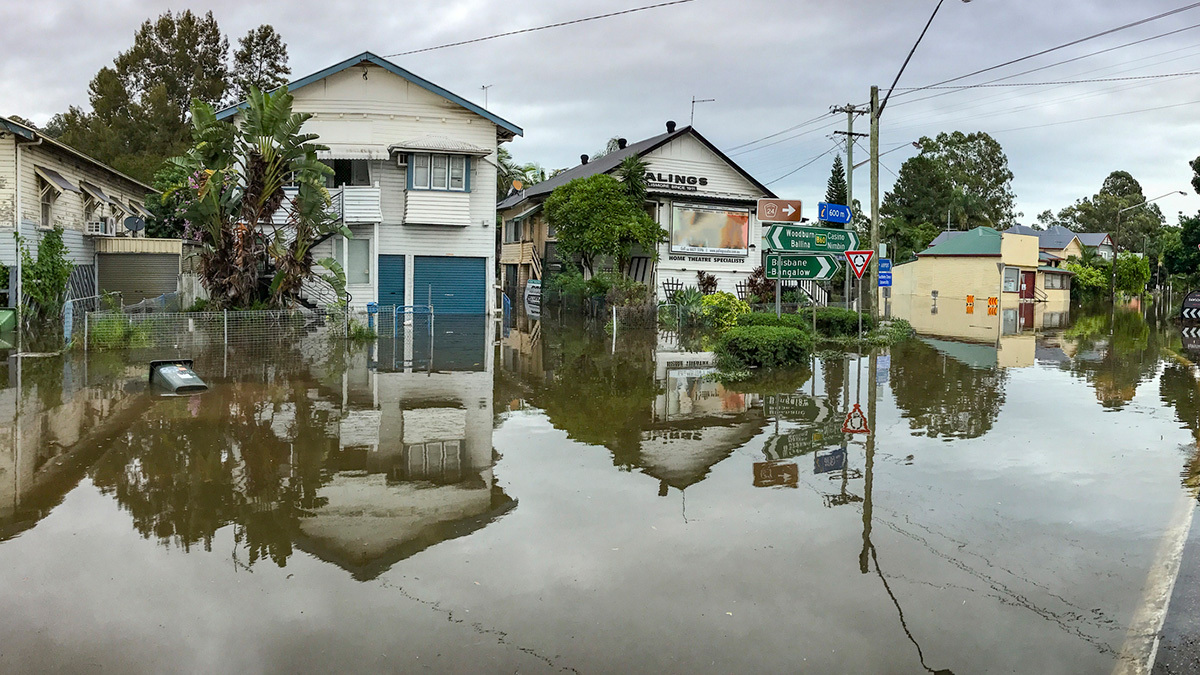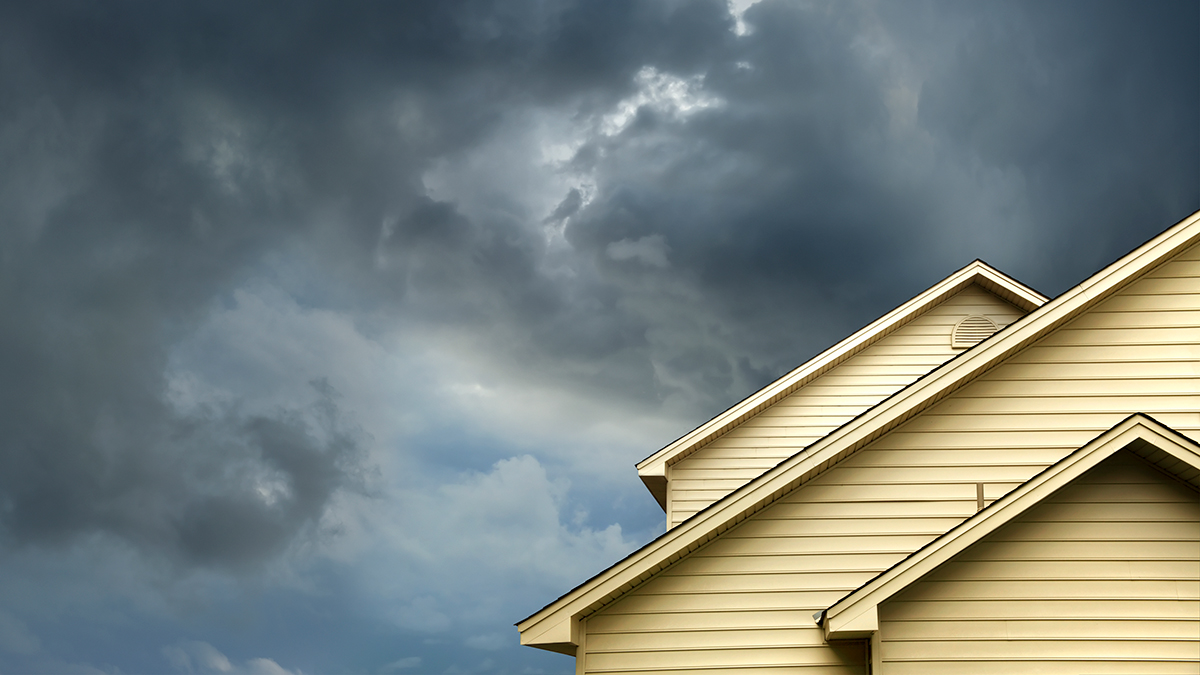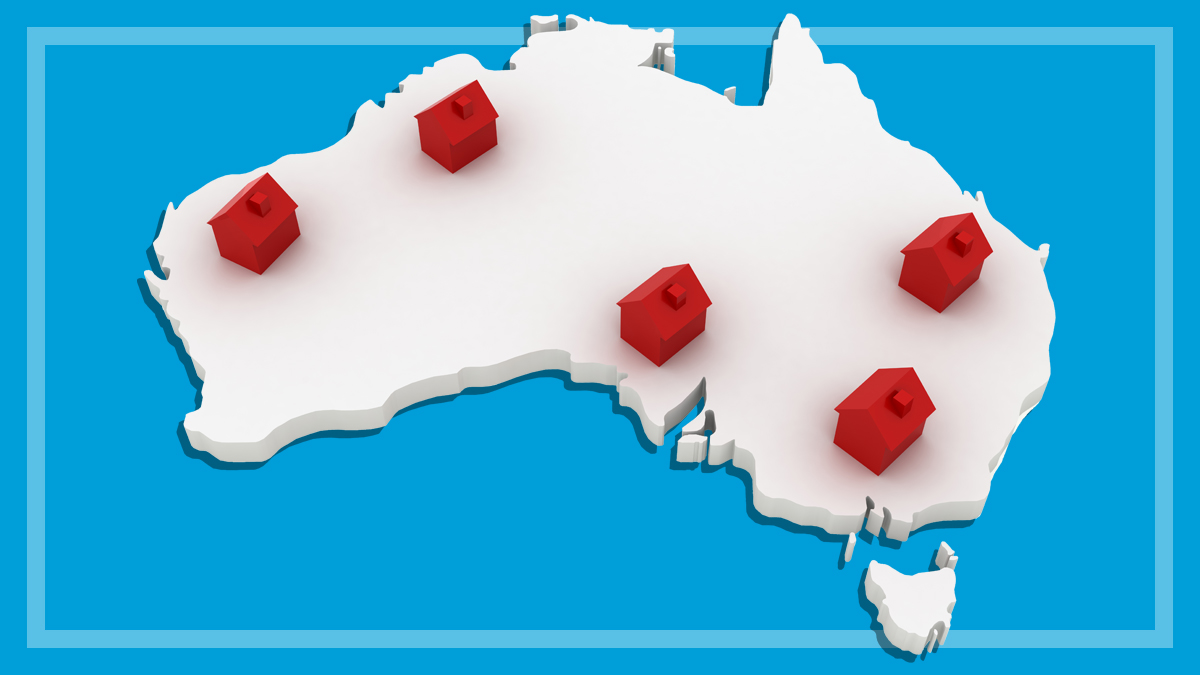Get our independent lab tests, expert reviews and honest advice.
Home owners drop unaffordable insurance as extreme weather risks grow

Need to know
- Home insurance premiums are rising around the country
- Experts say more extreme weather due to climate change will mean more homes become uninsurable
- Advocates are calling for a government inquiry into this complex issue
As climate change leads to a growing number of extreme weather events, some Australian home owners are finding it increasingly difficult to afford to properly insure their homes for weather-related threats.
Industry experts say a growing number of houses aren’t covered for events such as flood, fire and cyclones, with the lack of affordable insurance having flow-on effects across the economy when disasters occur.
The lack of affordable insurance is having flow-on effects across the economy when disasters occur
Dr Karl Mallon, CEO of climate risk analysis company of Climate Valuation, has been analysing climate change impacts for more than 20 years. He says the increase in unaffordable home insurance premiums in high-risk areas has happened faster than he previously had predicted.
“The world more than ever needs good insurance products, because the risks of extreme weather are increasing,” he says.
“Instead what we are seeing is a gradual contraction away from risk.”
Case study: Home insurance jumps $16,000 a year overnight
Bruce Robertson owns a property along the Manning River near the town of Burrell Creek on the mid-north coast of New South Wales.
Despite sitting in a flood-prone valley, he says the property has never flooded in the 100-plus years it has stood. He and his family bought the property four years ago to farm and run a small bed and breakfast.
At the time, he was paying around $2000 a year on his home insurance premium with flood cover included. But two years ago the premium went up to $18,000 a year overnight. He decided to drop the flood cover.
It doesn’t give me a good feeling not being insured. You do feel uneasy and you do feel exposed
Property owner, Bruce Robertson
“I’m really unhappy about it. It doesn’t give me a good feeling not being insured. You do feel uneasy and you do feel exposed,” says Bruce. “It’s a big asset. If you lose that it would have a huge impact on our lives and our kids’ lives.”
“If the house got flooded people would say that’s really irresponsible being uninsured for flood. But what choice do you have? You have to drop the cover and run the risk. This is the true cost of climate change, this is it in action.”
Home insurance costs rising around the country
Dean Price, senior campaigns and policy adviser at CHOICE, says the latest data from strategic analytics firm Finity paints a bleak picture of the changing market.
In the five years from April 2017 to April 2022, average quotes for combined home and contents insurance premiums around Australia rose by over 72%, an average overall increase of $1147 per annum according to data from Finity.
But the change isn’t evenly spread across the country and has been more pronounced in some areas.
The average home insurance quote in Queensland now stands at $3853
In Western Australia quotes for home insurance have risen over 101%, and in Queensland, the most expensive state, quotes have risen by 66%.
The average home insurance quote in Queensland now stands at $3853 for a year of cover.
These figures only reflect quotes and don’t tell the picture of whether insurance was actually taken out or not.
In June 2022, CHOICE surveyed over 1000 people on the cost of living and found 64% of respondents were either very concerned or quite concerned about the cost of home insurance.*
People are forgoing particular types of insurance if they can’t afford it and leaving their property underinsured or uninsured
Dean Price, senior campaigns and policy adviser, CHOICE
“What we are seeing is that people are forgoing particular types of insurance if they can’t afford it and leaving their property underinsured or uninsured. This obviously leaves people in a very vulnerable situation,” Price says.
“This is going to be an ongoing problem and something that’s going to need the attention of the insurance industry and also most likely governments, who are the ones who will pick up the costs when people aren’t adequately insured.”

Queensland homes at greatest risk of uninsurability
A recent report by the nonprofit communications organisation Climate Council in conjunction with Climate Valuation found an estimated one in 25 properties in Australia would be ‘uninsurable’ by the year 2030.
The report defines ‘uninsurable’ as when the value of the average annual damage to the property exceeds one percent of the property’s value. So although policies may still be available, the premiums will be too high for people to afford.
The report also highlighted the electorates more affected by uninsurability, with five of the ten most-at-risk electorates in Queensland.
The report defines ‘uninsurable’ as when the value of the average annual damage to the property exceeds one percent of the property’s value
Already in 2022 there have been catastrophic floods in Queensland and northern New South Wales, where the level of insurance has been a focal point of public discussion.
Economist and lead author of the Climate Council’s report Nicki Hutley says the report is a wake-up call for urgent action to address the issue.
“We have seen this issue in the north of Australia with insuring against cyclone risk for a number of years, but with increased floods and fires across the country, the costs are starting to rise and spread out,” she says.
Action needed
1. Better risk mitigation
Hutley says the first thing the federal government needs to do to address this issue is raise Australia’s ambition when it comes to carbon emissions reduction.
But beyond that, Hutley says a lot can be done to mitigate risk including investing in infrastructure, changing planning codes so we stop building in high-risk areas, and having tough conversations about relocating existing homes.
All of these problems are complex … but there are huge social and economic costs of doing nothing
Economist Nicki Hutley
“All of these problems are complex and there are no simple solutions, but there are huge social and economic costs of doing nothing,” she says.
Mat Jones, general manager of public affairs at the Insurance Council of Australia, the industry body that represents insurers, agrees that mitigation is essential to a solution.
“We have to recognise that the affordability issue is linked to the risk that’s present. So you can’t deal with the affordability issue by itself in a very effective way. The only sustainable answer to this worsening problem is to deal with the actual risk that’s present there and then if the risk is reduced through mitigation,” he says.
2. More transparency from industry
Mallon from Climate Valuation agrees that more needs to be done on the mitigation front. But although he acknowledges it’s “getting harder and harder to be an insurer”, he says there are things the industry can do to help consumers.
He says insurers and banks need to be more transparent and upfront with customers about the data and long-term risks they’re forecasting for a property and not just the premiums for that year.
He says these financial institutions have access to much higher levels of data than your average consumer and they need to be sharing that information so buyers can predict the risk over the life of a home loan.
People need to be aware of the long-term risks before they buy a house
Dr Karl Mallon, CEO, Climate Valuation
“We’ve got to have awareness. People need to be aware of the long-term risks before they buy a house,” he says.
CHOICE’s Price says there is a definite “imbalance” in the information customers have compared with their insurer, and Jones of the Insurance Council of Australia, says he is a “strong advocate” of more information being shared with customers. He adds that it isn’t just insurers that have useful information, but also banks and government bodies all the way down to local councils.
3. Reduce tax on premiums
Jones says that in some states, such as New South Wales, consumers can pay above 30% of their premium to tax, and that reducing the tax on premiums would be an effective way to quickly reduce the cost to customers.
4. Tailor premiums to individual cases
The issue doesn’t just affect those living in remote and regional parts of Australia. When Sarah was renovating her property in the inner-western Sydney suburb of Haberfield she consulted hydrologists and structural engineers who recommended she raise her property one meter on stilts due to the flood risk.
She hoped the renovations would reduce her insurance premiums, which had risen by over $2000 since the local council had done a flood study on the area. The renovations she made to the house didn’t change her premiums at all. She is now uninsured for flood risk.
“We spent a huge amount of money remediating the risk, and they just said ‘no, it makes no difference at all’,” she says.
Mallon says insurers need to get more sophisticated in the way they price risk, and acknowledge when customers make mitigating improvements to their home. He also called on banks to do more to fund climate-resilient renovations to properties as a way of preserving their long-term value.
Jones from the Insurance Council says each insurer prices risk differently, and he urged customers who are unhappy with a lack of individual consideration in their premium pricing to shop around.
5. Government inquiry
Price says there’s a need for a government inquiry into the whole issue of insurance and climate change risk, saying it’s a complicated problem and all aspects of it need to be examined.
It’s already an issue for a large number of people, and the number of people affected by this is likely going to grow
Dean Price, CHOICE
“What we understand from climate scientists is that the extreme weather events are going to continue to increase in frequency and devastation. Action needs to be taken now, because it’s already an issue for a large number of people, and the number of people affected by this is likely going to grow,” he says.
*CHOICE Consumer Pulse June 2022 is based on a survey of 1083 Australian households. The data has been weighted to ensure it is representative of the Australian population based on the 2016 ABS Census data for age, state, gender, household income and education levels. 2021 Census raw data were not available at the time of analysis. Fieldwork was conducted from 13 to 28 June 2022.






